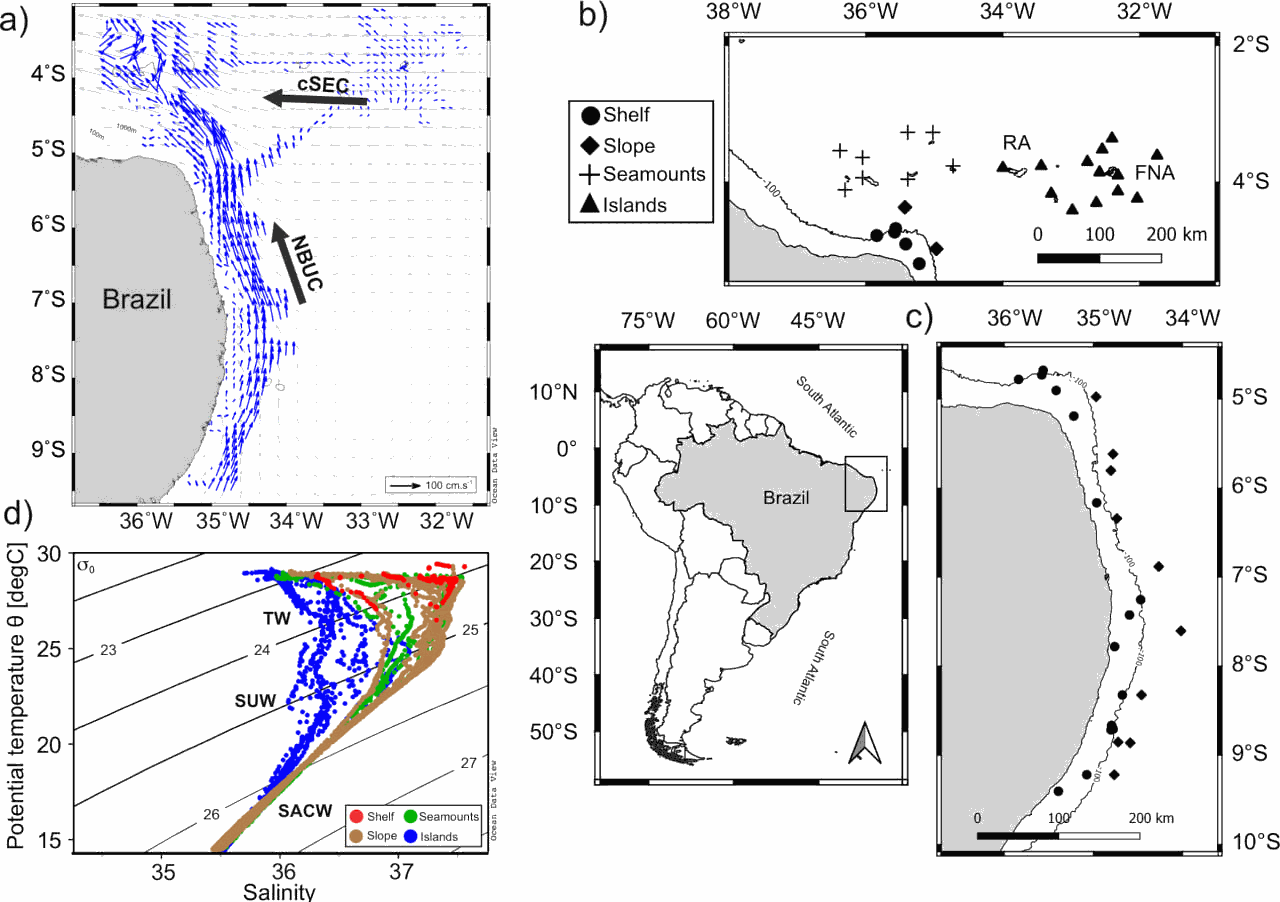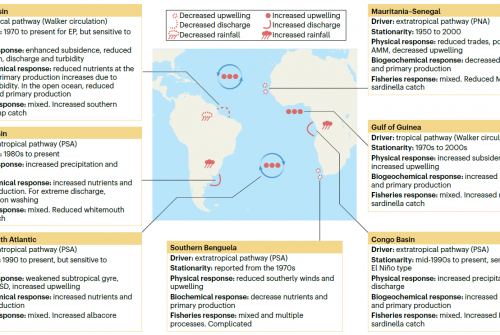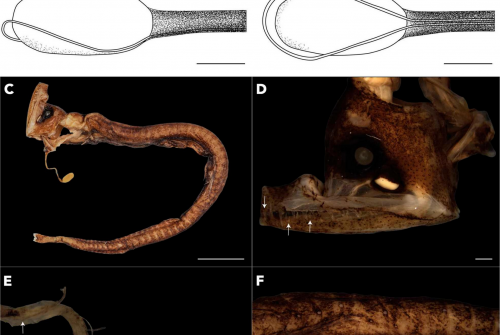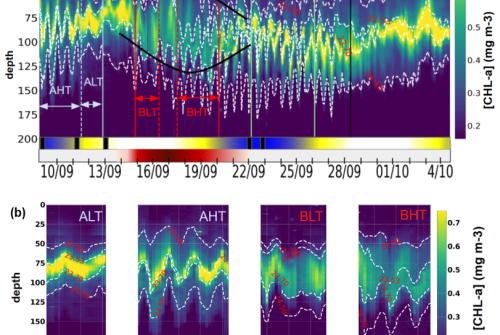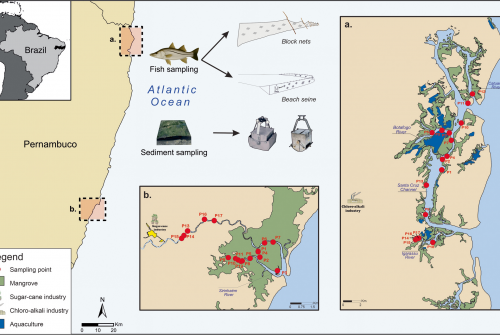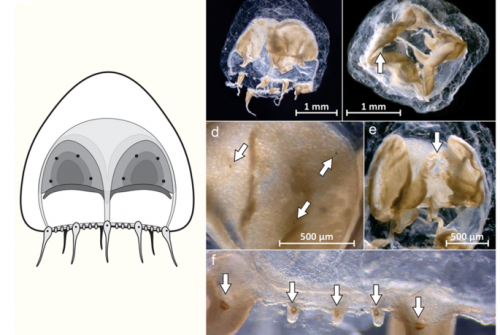Date: 2017
Authors: Farias Gabriel Bittencourt, Ternon Jean-François, Hillion Sandrine, Melo Pedro Augusto Mendes de Castro, Carré Claire, Molinero Juan-Carlos, Baurand François, Grelet Jacques, Chaigneau Alexis, Costa da Silva Alex, Devasa Jeremy, Béc Beatrice, Roubaud Fabrice, Bertrand Arnaud
DOI: 10.17882/95241
Description: During Abraços 2 (9-04 to 06-05 2017), picoplankton and nanophytoplankton samples were fixed with formaldehyde (2% final concentration), stored in liquid nitrogen (-196°C) until laboratory before counting using a Facs Aria Flow cytometer (Becton Dickinson, San Jose, CA, USA) equipped with a HeNe air-cooled laser (633 nm, 20 mW). Cells excited at 633 nm were detected and enumerated according to their forward-angle light scatter (FALS) and right-angle light scatter (RALS) properties and their orange fluorescence (576/26 nm) and red fluorescence (660/20 nm and 675/20 nm) from phycoerythrin, phycocyanin and chlorophyll pigments, respectively. Fluorescent beads (1-2 µm size for picophytoplankton and 3, 6 et 10 μm size for nanophytoplancton) were systematically added to each sample. True count beads (Becton Dickinson, San Jose, CA, USA) were added to determine the sample volume analyzed. List-mode files were analyzed using BD FACSDiva software. This method discriminates various autotrophic groups such as picoeukaryotes, picocyanobacteria (Prochlorococcus and Synechococcus) and nanophytoplankton (more larger organisms until 10µm) coupling the detection of cells size, their chlorophyll pigments and phycoerythrin, phycocyanin content (Bec et al., 2005). Abundances of organisms were expressed in number of individuals / L.
Abundance and size of pico- and nanoplankton were obtained using a FACSCalibur flow cytometer (Becton Dickinson) equipped with a HeNe air-cooled laser (633 nm, 20 mW), following the protocol of Marie et al. (1997). Samples were analyzed with a mixture of fluorescent beds (‘Fluorebrite’ YG, Polysciences) of various nominal sizes. Autotrophic cells excited at 633 nm were detected and enumerated according to their forward-angle light scatter (FALS) and right-angle light scatter (RALS) properties, and their orange (576/26 nm) and red (660/20 nm and 675/20 nm) from phycoerythrin, phycocyanin and chlorophyll pigments, respectively. Fluorescent beads (1-2 µm for picophytoplankton and 3, 6 and 10 μm for nanophytoplankton) were added to each sample. True count beads (Becton Dickinson) were added to determine the volume analyzed. This method discriminates various autotrophic and mixotrophic groups such as PEUK, picocyanobacteria (Prochlorococcus and Synechococcus) and PNF. For HB, cells DNA was stained with SYBRGreen I and counted under the emission of green fluorescence. After the quantification of biovolumes, the biomass of pico- and nanoplankton was obtained from conversion factors reported in the literature as follows: Prochlorococcus (29 fgC cell-1), Synechococcus (100 fgC cell -1), PEUK (1500 fgC cell-1) (Zubkov et al. 2000), PNF (3140 fgC cell-1) (Pelegrí et al. 1999) and HB (12 fgC cell-1) (Fukuda et al., 1998). Biomass is given in µgCL.
